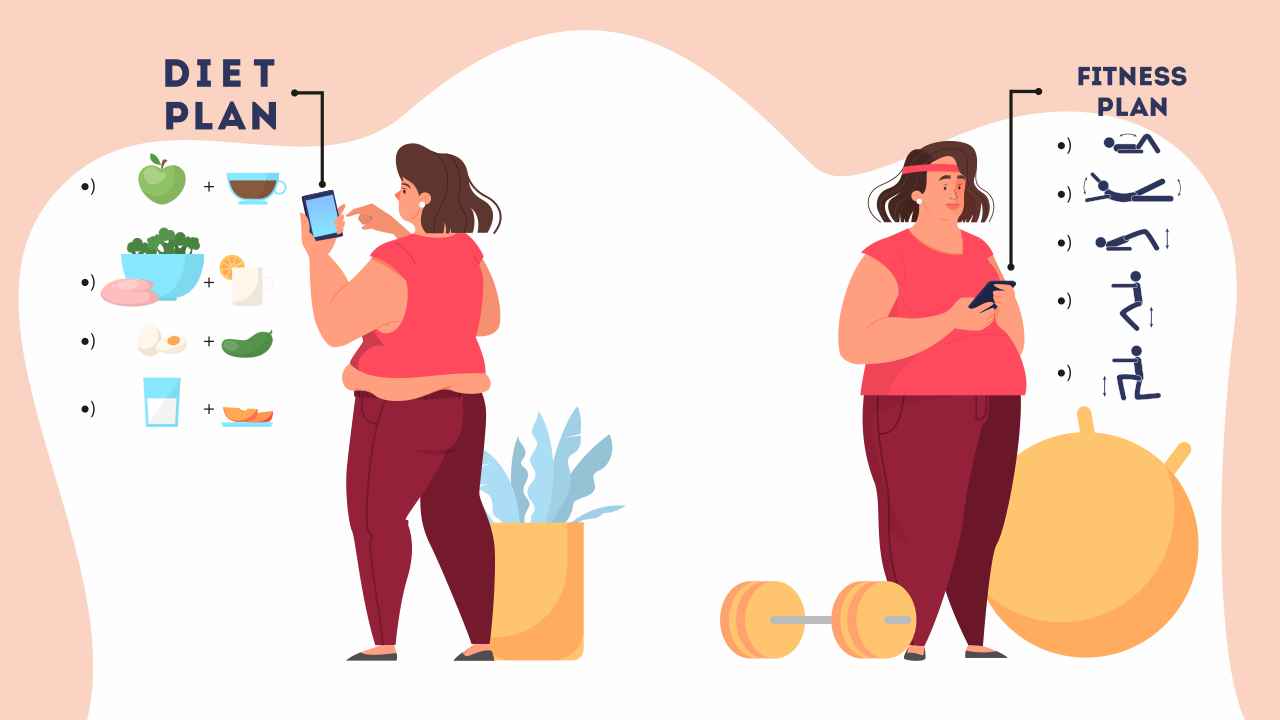
Foods That Keep You Fuller for Longer on Fewer Calories

Are you a frequent midnight visitor to your refrigerator? Do you often feel like a bite even after a full meal and not feel satiated enough? What you might be looking for are foods that keep you fuller for longer on fewer calories.
What kind of foods can keep you fuller for longer?
The ability of food that makes you feel full for longer is known as Satiety Index (SI). The higher the SI, the greater the food’s capability to keep you full. Such foods have one or more of these prominent characteristics:
1. High-protein
Food rich in protein can increase the levels of satiety hormones, which make you feel fuller. Research shows that following a high-protein diet plan can reduce the overall food intake during the day.
Also read: Protein: Everything You Need to Know
2. High-fiber content
Fiber can add bulk to your gut. It can also increase the digestion time by delaying stomach emptying (rate at which food exits the stomach). Due to these properties, high-fiber foods can keep you full for longer.
3. High-fat content
Fat delays stomach emptying and slows down digestion. However, as fats are rich in calories (1g=9kcal), it is essential to control the portions of fat-rich foods. For instance, consuming a fistful of nuts and oilseeds will cover 35%-40% of your Recommended Daily Allowance (RDA) as per the prescribed RDA guidelines for adults.
Also read: Dietary Fats: How to Choose Right and Eat Smart
4. High water content
Water increases the volume of any food item. Research shows that foods like juicy fruits and vegetables are naturally rich in water. So, consuming high-volume low-calorie foods might lead to long-lasting satiety.
Which foods should you include in your diet to feel fuller?
If you are looking for foods that can increase your satiety and reduce your overall calorie intake, you may consider incorporating these items into your diet.
1. Eggs
Eggs are a rich source of protein and fat. A single egg can give you around 6g-7g of protein and the same amount of fat. Apart from these nutrients, eggs are rich in antioxidants like vitamin A, selenium, and zinc. They are an ideal choice for breakfast, snacks, or main course. You can consume boiled/ scrambled eggs or an omelet as part of your meals.
2. Legumes and pulses
Legumes and pulses are rich in fiber and protein. Beans, lentils, chickpeas, split pulses (dals), and sprouts may provide you with adequate lean protein, complex carbohydrates, and beneficial fats to make you feel satisfied. A cup, which is around 100g of cooked lentils, can provide you with 8g of protein and 9g of fiber. So, legumes and pulses may help you feel satiated for a longer duration.
3. Nuts and oilseeds
Nuts and oilseeds, such as almonds, walnuts, flaxseeds, sunflower seeds, and peanuts are rich in healthy fats, protein, and fiber. Apart from making you feel full, these items contain antioxidants like vitamins A and D, and zinc, which contribute to your nourishment.
4. Vegetables
Vegetables are low-calorie foods. They are rich in fiber and water. Some vegetables like broccoli and turnip greens are also high in protein. Having a cup of vegetables along with your meals may reduce your snacking tendency. Additionally, vegetables comprise a variety of vitamins and minerals required for your body’s proper functioning.
Also watch: How to increase your vegetable intake?
5. Fruits
Fruits are a source of fiber, water, and complex carbohydrates. They contain a variety of antioxidants like vitamins A and C, and iron. Adding a cup (one serving/ 100g) of fruits to your breakfast or evening snack might help you have a filling meal and reduce your overall calorie intake.
6. Whole grains
Whole grains consist of complex carbohydrates, which provide you with satiety and improve your gut health. By consuming half a cup of a whole grain like quinoa, you obtain 4.4g of fiber and around 4g of protein. This might help you lower your hunger pangs and food cravings.
How to plan a diet to increase your satiety levels?
Including the aforementioned foods in your diet might help you feel full for longer and reduce your binging tendency in between meals. Here is a single day sample meal plan that you can follow to accomplish this objective:
| Time | Meal |
| Breakfast | Boiled egg sandwich + Diced fruits OR Peanut rice flakes (poha) + Diced fruits |
| Lunch | Multigrain Indian bread (multigrain roti) + Vegetable preparation (sabzi) + Paneer salad OR Boiled rice + Mixed lentil preparation(dal) + Vegetable salad |
| Snacks | Roasted nuts and oilseeds |
| Dinner | Paneer and rice preparation with vegetables (Biryani) + Curd + Salad |
Also read: Hunger, Appetite, and Cravings: How to Tell the Difference
The best way to reduce your overall energy/ calorie consumption is by eating foods that keep you full for a longer period. It is advisable to opt for foods that are rich in protein, fiber, fats, and water to achieve your goals.
References
1. Wilde PJ. Eating for life: designing foods for appetite control. J Diabetes Sci Technol 2009; 3: 366-370.
2. Hawton K, Ferriday D, Rogers P, et al. Slow Down: Behavioural and Physiological Effects of Reducing Eating Rate. Nutrients 2018; 11: 50.













